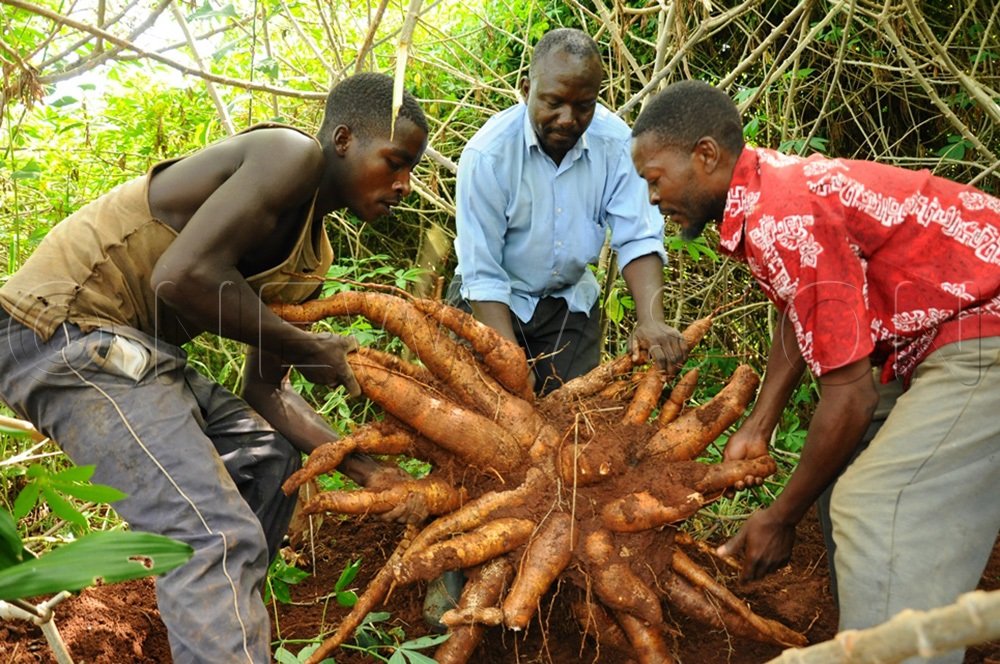Imagine 20 small farms working together as one intelligent unit—sharing weather alerts, pooling tools, and using AI-powered insights to predict the best planting time for everyone. This is not just a futuristic idea—it’s happening today through Community AI Farming.
Community AI Farming is a low-cost, high-impact strategy where smallholder farmers collaborate using shared AI tools, data platforms, and tech resources to make smarter, faster farming decisions. From pest alerts to drone scouting, community-level data can reduce costs and increase yields across entire villages or cooperatives.
In diesem Kapitel des Intelligentere Erträge series, you’ll learn how to build and benefit from a community AI network—even with limited funds.
Why Community AI Matters for Small Farms
“One farmer’s pest problem could be the village’s next outbreak—if you know early, you protect everyone.”
AI is powerful. But its true potential is unlocked when multiple farms contribute data:
- More data = more accurate predictions
- Shared tools = lower individual costs
- Group insights = better timing and coordination
Community AI helps address common smallholder challenges:
| Herausforderung | Community AI Solution |
|---|---|
| Cost of tech | Pool funds and share sensors/drones |
| Lack of data | Combine field-level info across members |
| Unvorhersehbares Wetter | Real-time alerts shared via WhatsApp or SMS |
| Pest outbreaks | Early detection and village-wide action |
What Is a Community AI Farming Network?
A Community AI Farming Network is a group of farmers or cooperatives who:
- Verwenden shared AI tools (apps, sensors, drones)
- Contribute data to a common platform
- Receive predictive insights and alerts
- Hold training or info-sharing sessions
- Make group decisions about planting, irrigation, or pest control
It’s like a rural version of a crowdsourced weather radar—but for crop health, rainfall, soil, and more.
Real-World Example: Cassava Farmers in Uganda

A cassava farmer cooperative in Lira, Uganda formed a Community AI Network in 2023:
- 15 farms pooled $300 to buy a used drone
- Each week, the drone maps a different field
- Smartphone apps like PlantVillage use the images to detect disease
- A WhatsApp group sends real-time alerts if cassava mosaic is found
- Moisture sensors are rotated among plots based on planting cycle
Result:
- Pest losses dropped 28% in one year
- Farmers adjusted irrigation timing more efficiently
- Training sessions taught 30+ farmers how to read AI dashboards
Core Tools for a Community AI Network (Under $1,000 Shared)
| Tool | Purpose | Shared Cost Estimate |
|---|---|---|
| Drone (used DJI Mini SE) | Crop health monitoring | $300–$400 |
| Smartphone with Plantix/Agrio | Pest & disease alerts | Frei |
| Moisture/Temp Sensors | Soil & climate data | $25–$100 each |
| AI Dashboard (OneSoil, FarmLogs) | Central data platform | Frei |
| WhatsApp or Telegram | Alert broadcasting | Frei |
| Local server or spreadsheet | Store shared data | Free–$50 |
For a group of 10 farms, each farmer may only need to contribute $30–$60.
How to Set Up a Community AI Farming Group
Step 1: Form a Tech Circle or Co-op Subgroup
Create a small working group within your farmer cooperative or village association. Aim for 5–20 members initially.
✔ Elect a “Tech Steward”
✔ Identify the most pressing local problems (e.g., drought, fall armyworm)
✔ Assign roles: drone pilot, app user, sensor installer
Step 2: Decide on Shared Goals and Tools
Define what problems AI tools will solve for the group.
| Problem | Example Tool |
|---|---|
| Late pest detection | Plantix app + shared photo log |
| Wasteful irrigation | Shared soil sensor + group alert |
| Planting schedule mismatch | AI dashboard + rainfall tracking |
| Expensive crop inputs | Predictive planning for bulk buying |
Choose 2–3 core tools and grow from there.
Step 3: Pool Funds and Buy Shared Equipment
Use member contributions or cooperative funds to buy:
- A refurbished drone
- Soil moisture sensor kits
- A basic tablet or phone for field use
Look for deals on:
- AliExpress
- eBay
- Local agri-tech vendors
Step 4: Create a Shared Data System
Verwenden Google Sheets, FarmLogs, or OneSoil to collect:
- Planting dates
- Moisture levels
- Rainfall and wind forecasts
- Crop stress alerts
Assign someone to input and monitor data weekly. This person can be trained or supported with a small stipend.
Step 5: Use Messaging Apps for Alerts
Create a WhatsApp group oder Telegram channel for:
- Pest sightings
- Sensor alerts (e.g., “Moisture below 20%”)
- Weather warnings
- Drone image results
Make it a habit to check and act on the group’s messages.
Step 6: Schedule Monthly “Tech Talks”
Hold short monthly gatherings to:
- Review what the AI tools are showing
- Discuss upcoming crop decisions
- Train members on new apps or updates
- Troubleshoot issues (e.g., sensor battery, drone weather limits)
These informal sessions help build confidence and knowledge across all skill levels.
Top Free AI Tools Ideal for Farming Communities
| Tool | Am besten für | Kosten | Sprachunterstützung |
|---|---|---|---|
| Plantix | Disease/pest ID | Frei | 18+ languages |
| Agrio | Early pest alerts | Frei | English, Spanish, others |
| OneSoil | Satellite data & mapping | Frei | Allgemein |
| FarmLogs (basic) | Logging & forecasting | Frei | Englisch |
| PlantVillage Nuru | Cassava and maize pest AI | Frei | Localised for Africa |
Benefits of Going Community-First with AI
✅ Cost Savings
Shared tools lower the cost per farm by 60–90%.
✅ Better Predictions
10 farms reporting data = stronger AI insights for weather, soil, and pests.
✅ Faster Responses
A pest spotted in one field triggers action before it spreads.
✅ Skill Building
Tech knowledge spreads faster when it’s local and peer-supported.
✅ Group Bargaining Power
Use predictive tools to plan bulk purchases for seeds, fertilisers, or sprays.
Overcoming Challenges
🔧 Problem: Digital Skill Gaps
Lösung: Pair less tech-savvy farmers with mentors. Use visual training materials.
🔧 Problem: Weak Internet or Electricity
Lösung: Use offline-first apps; solar-charge devices; sync data weekly when online.
🔧 Problem: Equipment Rotation Conflicts
Lösung: Create a weekly tool-sharing schedule. Consider a booking sheet or whiteboard.
🔧 Problem: Data Privacy Concerns
Lösung: Set rules: no one shares group data without permission. Use anonymised inputs.
Case Study: A Women-Led AI Farming Group in Kerala, India
In Wayanad, Kerala, a women-led farming cluster of 12 smallholders formed an AI data circle:
- They used a community smartphone to track rainfall with OneSoil.
- Rotated sensors tracked field conditions weekly.
- One member monitored Agrio alerts and forwarded them to the group.
- A shared log tracked pest sightings and responses.
Results in 1 season:
- 21% less fertiliser use
- Two pest outbreaks stopped before spreading
- 18% more consistent yields among members
How to Scale: From 10 Farms to a District Network
Once the local group succeeds, expand:
- Invite neighbouring farmer groups to observe or join
- Connect with NGOs or agri-extension offices for training support
- Share success stories with local press or WhatsApp broadcast lists
- Collaborate with universities or agri-tech companies for pilot trials
AI + Community = Farming Resilience
When AI tools are shared and decisions are made as a group:
- No farmer is left behind
- Knowledge grows faster
- Inputs are used wisely
- Profits rise sustainably
Community AI Farming brings equity, sustainability, and digital inclusion to the heart of agriculture.
It’s not about the size of your field—it’s about the strength of your network.
✅ Quick Checklist: Start a Community AI Farming Group
- Form a working group of 5–20 farmers
- Identify shared problems and goals
- Choose 2–3 key AI tools to start with
- Pool funds and buy/refurbish essential tech
- Set up a shared data dashboard (OneSoil/FarmLogs)
- Create a group chat for real-time alerts
- Schedule monthly tech talks or check-ins
Conclusion: Farming Is Smarter Together
By pooling AI tools, knowledge, and resources, small-scale farmers can compete with industrial farms—without needing millions of dollars or high-tech infrastructure.
The future of farming is community-powered and intelligence-driven.


